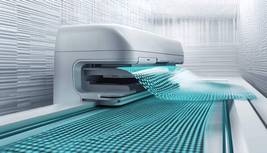Common Myths About Circulation Pumps (And the Truth Behind Them)
Circulation pumps are the silent workhorses of heating and hot water systems, tirelessly moving water around without asking for much in return. Yet, despite their importance, theyíre often misunderstood. Misinformation about these pumps spreads faster than gossip at a family reunion, leading to costly mistakes, inefficient systems, and unnecessary frustration. Itís time to separate fact from fiction. And with BritTherm leading the way in high-efficiency circulation pumps, there's no better time to set the record straight.
Myth #1: All Circulation Pumps Are the Same
Saying all circulation pumps are the same is like saying all cars drive the same just because they have four wheels. The reality is that circulation pumps come in various sizes, speeds, and efficiency levels, each designed for specific applications.
A pump meant for a small homeís heating system wonít cut it in an industrial setting. Similarly, a high-powered pump in a basic home system can lead to excessive wear, noise, and wasted energy. BritTherm offers a range of circulation pumps tailored for different needs, ensuring the right match for the job.
Myth #2: Circulation Pumps Donít Need Maintenance
If only this were true. The idea that circulation pumps are "install and forget" devices has led to more breakdowns than anyone cares to admit. While modern pumps, like those from BritTherm, are built for reliability, they still need some occasional TLC.
Over time, air pockets, sludge buildup, or worn components can reduce efficiency or even cause the pump to fail. Regular system flushing, bleeding air from the system, and checking for leaks can keep a circulation pump running at peak performance.
Myth #3: Bigger Pumps Are Always Better
Thereís a temptation to go big when replacing a circulation pump, thinking that a more powerful model will "boost performance." In reality, an oversized pump can create more problems than it solves.
Too much flow can lead to noisy operation, increased wear on system components, and wasted energy. The right pump should match the system's needs precisely, and BritThermís energy-efficient circulation pumps are designed with this balance in mind.
Myth #4: Circulation Pumps Should Run 24/7
Some believe circulation pumps need to be running constantly, but thatís not always true. While some systems require continuous circulation (like those in certain commercial applications), many residential setups only need the pump to run when heating or hot water is required.
Modern circulation pumps come with smart controls that adjust operation based on demand, reducing unnecessary wear and saving energy. If your system isnít set up this way, it might be time for an upgrade.
Myth #5: If Itís Making Noise, Itís Just Old
A noisy circulation pump isnít just an aging piece of equipment groaning about retirementóitís trying to tell you something. Strange sounds often indicate issues like airlocks, worn bearings, or blockages in the system.
Ignoring the noise wonít make it go away, and in many cases, addressing the problem early can prevent a complete breakdown. If your pump sounds more like a horror movie soundtrack than a silent operator, itís worth investigating the cause.
Busting Myths, One Pump at a Time
Circulation pumps might not be the most glamorous piece of technology, but theyíre vital for keeping heating and hot water systems running efficiently. Understanding how they work, choosing the right one, and giving them proper maintenance can save money, prevent frustration, and improve performance.
With BritThermís range of high-quality circulation pumps, you can be sure youíre getting a reliable, energy-efficient solution designed for real-world needs. So next time you hear a pump-related myth, youíll know betteróand you might just save someone from making an expensive mistake.
|
|

